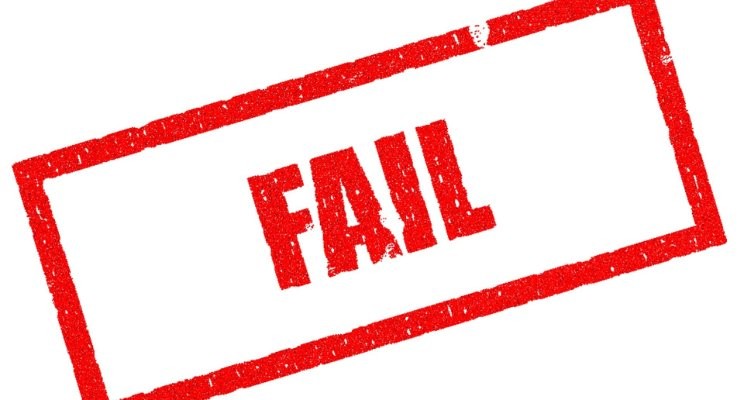
Yes, I know these chapters are the wrong way around. Live with it.
So we’re continuing our series on the best strategies for avoiding employment. Part One was all about How to Flunk Your Interview, but if you screw up the paperwork properly to start with, you’ll never get as far as an interview, thus saving all that tedious and time-wasting travel and conversation. And once again: yes, this is all inspired by what I’ve seen in the real world.
Initial Impressions
The very first time a prospective employer looks at your CV, impressions start forming in his/her mind about your personality, professionalism and attention to detail. It’s really important that you guide them down the right path here. For starters, they know that most applicants have a dozen or more irons in fires, but would like to see that you put some thought into this particular application. So don’t. It’s absolutely fine to send the same CV to everyone, and not even bother with a one-paragraph cover-note unique to each. Even better, have a cover-note that just boldly declares your name (and photo, see below) and tells them nothing else.
Stick to the facts (or fictions)
Whether you write eighteen pages of excruciating detail about how you climbed the stairs to make coffee, or just bullet-pointed each of your (completely work-unrelated) tasks and skills used at every role you’ve ever had (don’t forget your paper-round), never explain how those activities benefited your team or the business. The job description had a list of required skills, right? So just list those skills out. Copy & paste them straight into your CV if you like – nobody will notice. Don’t waste the recruiter’s time telling the story of how your foresight and innovation boosted the team’s output by 30%, or increased the company’s profitability, or consistently delivered projects on-time, on-budget and on-scope. He or she doesn’t want to hear stories like that. Nobody is interested in what you’ve achieved, only in the skills you’ve got.
And while you’re at it, ensure there are several inconsistencies. Add a summary table of your previous roles, but make sure the dates don’t agree with those on your excruciatingly detailed essays of those same roles. Overlapping dates can be fun too. Do the same thing with your skill-set list: make sure nothing included there appears in actual use at any of your previous jobs.
Worth a thousand words
Having your mugshot on the front page is a must. The bigger the better. Preferably against a completely non-work-related background (think strip club, amusement park, or beach), and with an entirely work-inappropriate facial expression. Make it clear that you’re fabulous and you know it.
Fun with Fonts
The more the merrier! Using only one font minimises the chances that the hiring manager won’t like it. So use them all. Don’t forget to vary the size throughout, and make liberal use of bold, italics, underlines and all of them combined.
Liberal sprinklings of (completely irrelevant) fixed-space text add visual interest too.
If this makes it a little harder to read, why should you worry? Do you really want to work for somebody who can’t be bothered to put the effort in?
Eye have aye spelling chequer
With today’s automated tools, it’s difficult not to fall into the trap of accidentally creating a grammatically-perfect, fully proofed document. Work at it. Resist the temptation to give into the prompts and suggestions. You know what you’re trying to say, right? How could Microsoft possibly know better? If you find that bits of text keep annoyingly getting squiggly-underlined, just go turn off the spelling and grammar checks. If your CV reflects a keen attention to detail, and they hire you (horror!), they’ll expect that same perfection from you every day.
Colour is Classy
This is often overlooked – a rookie mistake. Just imagine the poor hiring manager, having to wade through a pile of boring CVs neatly printed in black on a white background. Who doesn’t like a nice, cheerful, colourful document? Brighten up somebody’s day. Use several colours, and be inventive! Pale yellow text on a white background is amazingly difficult to comprehend, especially when printed out. One strategy is to keep to a standard: say, red for main headings, green for sub-headings, and blue for body-text (purple for bullet-lists, of course). Alternatively, simply pick the next colour in the list every time you have a line-break. Or see if you can make rainbows!
Layouts for Losers — Bonus points: landscape.
Use columns. As many as possible. Have your personal statement (which of course should be absolutely meaningless drivel) printed sideways down the edge of the page. Or maybe sideways down the middle column. Be creative! Why not have the text spiral round the page? Imagine the fun that poor hiring manager will have, turning the page around and around, trying to decipher your utterly pointless editorialising.
Use breakout boxes!
These are great for random anecdotes which add no value whatsoever.
To achieve expert-level here, you’ll need to ensure that alternate pages flip between landscape and portrait mode.
Make them work for it! Pick one of these strategies
- Over-explain everything, in the minutest detail. Assume the reader knows nothing whatsoever, and help him/her to fill in the gaps. You’re amazingly intelligent, and here’s your chance to show off. The more the merrier. There’s nothing wrong with 37 pages of exquisite minutiae. Use impressive words like exquisite minutiae. Feel free to walk them through a day-in-the-life, starting with when you woke up. But be careful to never explain how you added value.
- Explain nothing. Bullet-point skills-list only. Give away little more than your job title. Surely they can figure out the rest?
Who needs timelines?
Is there any reason why your employment history (or if you’re really good at this, your lack of employment history) needs to be chronological, with most-recent first? Nah. Arrange them alphabetically. Or in order of company size. And don’t forget to sprinkle with colour and font-changes. Above all, make it difficult for anyone to discover what you were doing most recently.
Don’t just focus on work!
Companies wax lyrical about work/life balance, right? Your CV should reflect that, otherwise they might think you’re a workaholic and offer you a job. It’s essential that you give equal (or more) space to your hobbies and outside interests. Think of the poor CV-reviewing manager, wading through piles of documents that just talk about work, work, work. Give the guy a break! Surely he’d rather be reading a fascinating seven-page essay exploring the performance of different glue types used in assembling balsa-wood gliders? Don’t forget to include plenty of pictures.
You should also brag about your awesome balsa-wood-gluing ability in the skills list along with everything else.
Some pictures of your cat always go down well, too. If you don’t have a cat: no problem. The internet is FULL of cat pictures.
Remember the References
Always give personal and professional references. These should either be entirely (and very obviously) fictional, or via weblinks which don’t work. Bonus points if you use links that point to a page that’s been suspended by the government for illegal activity.
In summary
If you follow my advice above carefully, you should successfully avoid being taken any further in the hiring process. But don’t panic if the unimaginable does happen, you can still completely blow your interview.
The postings on this site don’t necessarily represent the views or opinions of my employer, professional organisations, political party, family, car manufacturer or anybody at all, really. I don’t know where they come from. It scares me sometimes.
If you found this content to be useful or entertaining, why not buy Grumpy a coffee?


One thought on “Don’t get hired! Part Two: Your CV/Résumé”